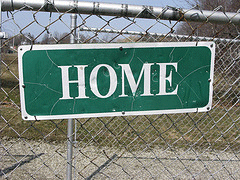
For far too many of everyone else, homes are beyond their budgets, and the hope of homeownership is compromised by largely stagnant earnings and damaged credit.
In January, CFED released its annual Assets & Opportunity Scorecard, which measures 135 policy and outcome areas in five different categories: Financial Assets & Income, Businesses & Jobs, Housing & Homeownership, Health Care and Education. Many of the measures rise and fall with the national and local economies, but also reflect on how narrow and shallow the recovery has been.
The major findings of the report suggest that the rebound has not extended evenly across demographics. As in 2013, the national poverty rate last year was 14 percent, reflecting the lack of wage growth and good employment opportunities in certain communities. Another hangover of the recession has been the hit Americans’ credit has taken: 56 percent of consumers have subprime credit, making borrowing an expensive choice to finance life’s necessities let alone anything even vaguely entertaining.
As a key to most families’ wealth, for household balance sheets to improve, so must homeownership across various markets. There is some good news, though. For example, delinquent loans are down in the United States. Likewise, foreclosures have dropped considerably, in part because 32 states have moved to assist families in crisis. Nevertheless, homeownership, at 63.5 percent, is at levels not seen since the early 1990s. And while CFED and others do not advocate for anything but safe loans based on the ability to repay and other good underwriting, this trend is not only concerning, but also meshes with other trends in the market.
Communities of color have been hit particularly hard. Such households have a 45 percent homeownership rate, compared to 71 percent for white families. The recession worsened an already unequal wealth distribution across race. Major news outlets are reporting this crisis, but we have to first learn the lessons of the past, both negative and positive, before we can truly move forward.
The use of high-cost mortgages, as defined by the Home Ownership Equity Protection Act (HOEPA), are on the rise in 42 states. Eight states have reduced support for first-time homebuyers in such areas as counseling, which can be critical to successful homeownership, though additional research is certainly needed. Perhaps the federal government, through the efforts of the Federal Housing Administration and the Federal Housing Finance Agency, will give first-time homebuyers some needed assistance, which can counter, to a point, bad policy choices at the state level.
Much what has been behind our nation’s new reticence on homeownership may be due to the discredited meme in some circles that mortgages to low- and moderate-income buyers, spurred on by reckless federal policies, caused the meltdown. Slowly but surely, national media are acknowledging the research that shows the facts are very different than the storyline laid out in some circles.
We know that solid underwriting and servicing can lead to successful homeownership and wealth building. We also know that poor underwriting, predatory lending and under-regulated market players each greatly contributed to the wealth stripping of communities across the country.
As we start to rethink our approach to homeownership, repairing the wealth gap and shoring up communities, policymakers and advocates need to focus on the basics. Wage growth; strong, clear and consistent regulatory regimes; and the development of transparency in the marketplace are needed so consumers can make reasonable choices about their futures. And you thought this would be hard.
(Photo credit: Flickr user Mason Masteka, CC BY-SA 2.0)






Comments